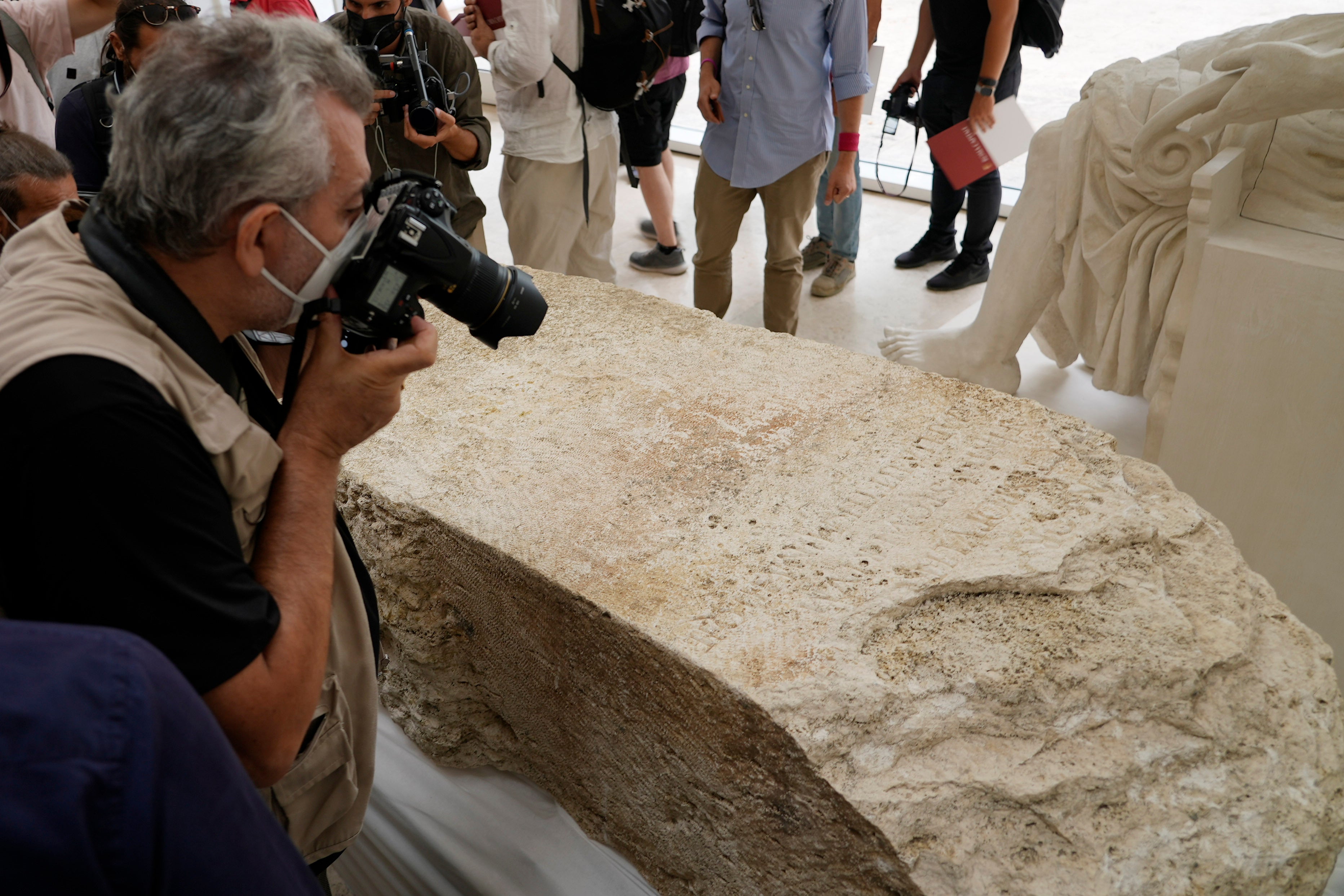Rare stone discovered outlining ancient Rome's city limits
Archaeologists have discovered a rare stone delineating the city limits of ancient Rome that dates from the age of Emperor Claudius in 49 A.D. Rome Mayor Virginia Raggi was on hand for the unveiling Friday of the pomerial stone, a huge slab of travertine that was a sacred, military and political perimeter marking the edge of the city proper with Rome’s outer territory

Your support helps us to tell the story
From reproductive rights to climate change to Big Tech, The Independent is on the ground when the story is developing. Whether it's investigating the financials of Elon Musk's pro-Trump PAC or producing our latest documentary, 'The A Word', which shines a light on the American women fighting for reproductive rights, we know how important it is to parse out the facts from the messaging.
At such a critical moment in US history, we need reporters on the ground. Your donation allows us to keep sending journalists to speak to both sides of the story.
The Independent is trusted by Americans across the entire political spectrum. And unlike many other quality news outlets, we choose not to lock Americans out of our reporting and analysis with paywalls. We believe quality journalism should be available to everyone, paid for by those who can afford it.
Your support makes all the difference.Archaeologists have discovered a rare stone delineating the city limits of ancient Rome that dates from the age of Emperor Claudius in 49 A.D. and was found during excavations for a new sewage system.
Rome Mayor Virginia Raggi was on hand for the unveiling Friday of the pomerial stone, a huge slab of travertine that was used as a sacred, military and political perimeter marking the edge of the city proper with Rome’s outer territory.
It was found June 17 during excavations for a rerouted sewer under the recently restored mausoleum of Emperor Augustus, right off the central Via del Corso in Rome’s historic center.
In ancient Rome, the area of the pomerium was a consecrated piece of land along the city walls, where it was forbidden to farm, live or build and through which it was forbidden to enter with weapons.
At a press conference in the Ara Pacis museum near the mausoleum, Claudio Parisi Presicce, director of the Archaeological Museums of Rome, said the stone had both civic and symbolic meaning.
“The founding act of the city of Rome starts from the realization of this ‘pomerium,''' he said of the consecrated area. The stone features an inscription that allowed archaeologists to date it to Claudius and the expansion of the pomerium in 49 A.D., which established Rome's new city limits.
Raggi noted that only 10 other stones of this kind had been discovered in Rome, the last one 100 years ago.
“Rome never ceases to amaze and always shows off its new treasures,” she said.
The stone will be on display at the Ara Pacis museum, the Richard Meier-designed home of a 1st century altar until the Augustus museum opens.